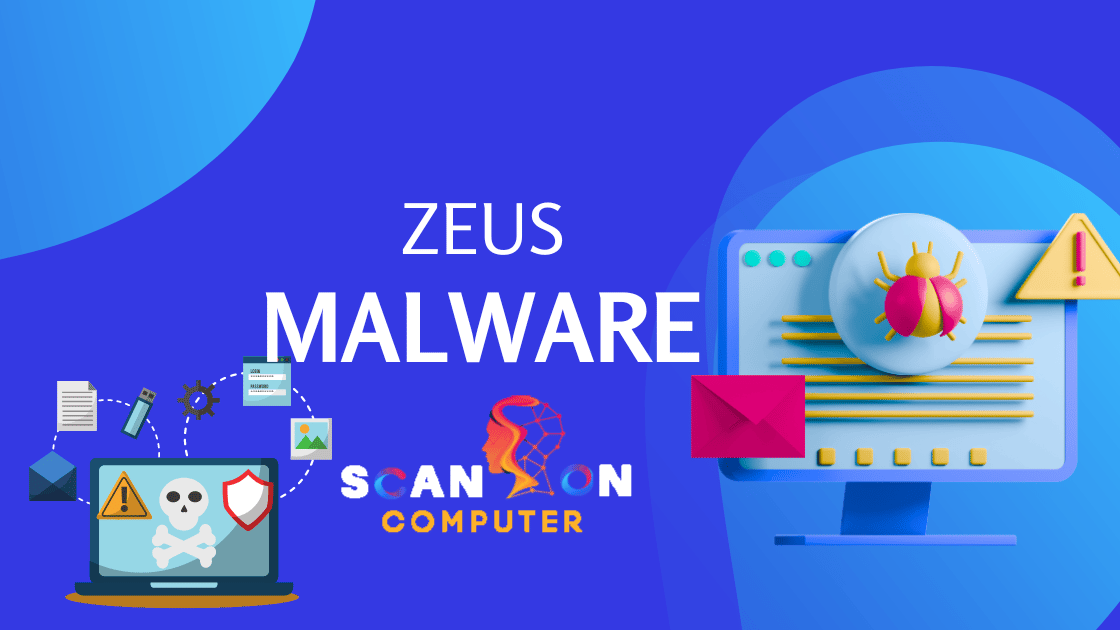Zeus malware serves two main purposes: stealing people’s financial information and adding infected computers to botnets. Only an advanced cybersecurity solution capable of constantly adapting against new threats can protect against these risks.
Hamza Bendelladj, the creator of Zeus trojan, was arrested in 2010 but this didn’t stop hackers from using his code to bypass security measures and continue stealing data.
What Is Zeus Malware?
The Zeus Trojan is a computer malware program designed to infiltrate computers running Windows operating systems and steal personal information, financial details and other sensitive material from them. Most infections come about via phishing campaigns or drive-by downloads.
After being infected by Zeus malware, computers become part of a botnet controlled by attackers – giving hackers access to steal financial information or conduct DDoS attacks without the knowledge or consent of victims. Keyloggers and form-grabbers also can capture banking credentials that could later be used by Zeus to intercept or redirect wire transfers and steal from victims’ bank accounts.
Zeus Trojan first emerged as a threat in 2009 and quickly become one of the most dreaded cyber threats worldwide. For its first decade, this infamous crimeware targeted machines at NASA, Oracle and Bank of America among others; specifically accessing Internet Explorer’s Password Store feature and keylogging or browser injection techniques to gain entry and steal passwords and information.
“Webinject,” one of the malware’s signature features, allowed it to steal information from websites by inserting web scripts directly into their source code and accessing their databases directly. Peer-to-peer functionality allowed infected computers to share collected information among each other without signature-based antimalware detection systems recognizing its signature. Hamza Bendelladj allegedly behind Zeus was arrested in 2012 but later released after facing numerous counts of wire fraud and computer misuse charges; yet this threat continues to evolve rapidly.
Types and Use Cases of Zeus Malware
Zeus malware can wreak havoc when it infiltrates a computer, taking several forms. For instance, it could steal banking passwords and monitor online financial transactions; record keystrokes to give hackers access to login information and personal details; record keystrokes while spying for potential login details or personal details that hackers could exploit; record keystrokes so hackers gain entry to login details or personal details from victim users and even install ransomware to hold out until an additional sum has been paid in ransomware payments; even ransomware could lock out victims until paying an exorbitant sum in return.
Although Zeus has seen less threat since its creator, Slavic, retired in 2010, it remains a dangerous Trojan virus. Following Slavic’s source code release for public viewing, various variants began emerging and continue to be utilized for malicious activities around the globe.
Zeus malware primarily spreads via drive-by downloads and phishing attacks. Cyber criminals utilize social media campaigns and emails that contain malicious links leading to websites with Zeus embedded within, while sometimes hackers gain entry to real sites and inject their malicious software therein.
Once a device is infected with Zeus malware, it joins a botnet — or network of infected machines controlled remotely by hackers — which the FBI estimates has caused over $100 million in financial losses when finally shut down in 2014. Gameover Zeus often used siphon funds from victims’ bank accounts and deliver it into cyber criminal hands for transfer overseas where its traceability could be hard to ascertain.
Zeus Virus Infection Methods
The Zeus virus is an old trojan specialized in stealing online banking and financial data from infected computers. But its capabilities extend far beyond this and has been used in multiple crimes since 2007. Although no one knows for certain who initially created the original malware, law enforcement agencies believe hackers from Eastern Europe may have been behind its development; since then numerous variants of it have appeared, keeping cyber security experts and law enforcement busy.
Zeus typically steals data by using man-in-the-browser keyloggers to record usernames and passwords when its victims access online banking sites, as well as form-grabbing techniques to intercept content entered into website forms before it reaches servers; once this data has been captured by Zeus it will be sent directly back to an attacker-controlled command and control server for transmission to its hackers.
Zeus can not only steal financial and banking data, but it can also add infected computers to a botnet controlled by hackers and used for distributed denial-of-service (DDoS) attacks. Furthermore, CryptoLocker ransomware may also be installed onto these infected systems or use their processing power against other systems.
Zeus viruses infiltrate devices most frequently through clicks on malicious adverts on the internet, often known as malvertising. Therefore, it’s essential to practice safe browsing and block such ads – also referred to as malvertising – which could potentially infiltrate your device. Furthermore, only download software from trusted sources and avoid clicking online ads whenever possible.
How Does Zeus Malware Work?
Once it infiltrates a device, the Zeus trojan operates in multiple ways to gather banking data from its victims’ computers. It primarily targets banking log-in information by keylogging and form-grabbing methods when users visit banking websites; intercepting forms before it goes directly to web servers; recording login information used during banking sessions and intercepting website forms before going live with content that can later be transmitted back to hackers who manage its botnet network. When sufficient login details have been accumulated by this malware it sends all that information back to hackers who manage its botnet network of botnet hackers for distribution before sending all this data back for further manipulation by hackers who manage its botnet network of hackers who manages it all over.
Hackers commonly utilize phishing emails and fraudulent social media campaigns to spread the Zeus virus. They may also inject its code directly onto websites aimed at consumers. Such attacks may be difficult to spot as this malware has been designed to avoid detection tools like antivirus programs; however, consumers can spot signs of its presence by noting an unusually high number of unfamiliar programs running or their hardware overheating.
Individuals can avoid Zeus infections by not clicking on any suspicious links in emails and social media messages, running antivirus software with regular updates, and only downloading pirated software from trusted sources. Businesses can combat Zeus and other threats by implementing enterprise-level risk management and cybersecurity strategies like Proofpoint’s. We help organizations build strategies and infrastructure designed to prevent ransomware, Zeus, or any other types of malware from harming their business operations – contact us now to discover how we can assist yours!
Preventing Zeus Malware Attacks
Although cybersecurity experts were relieved when Zeus’s creator “retired” in 2011, its presence still thrives and new variants keep emerging. At its height, Zbot or Ztrojan infected millions of computers globally each year and was responsible for some of the largest botnet attacks ever witnessed including $70 million worth of theft from bank accounts.
Zeus infiltrates computers through drive-by downloads, an unsavory method which injects backdoor code onto websites without user consent or simply pretending to be legitimate – with no malicious intentions whatsoever; such as social media networks or search engines. While modern web browsers usually block drive-by downloads, hackers have found workarounds to get Zeus onto computer systems.
Once installed, malware can begin monitoring a computer’s owner. This could involve simply tracking keystrokes to steal banking passwords or it could involve collecting information from legitimate websites that host forms used for online shopping or credit card transactions. Malware could even use its thousands of compromised machines to perform a massive denial-of-service attack, flooding servers with artificially high levels of traffic to make them unusable.
One of the best ways to protect against Zeus infections is avoiding suspicious links in email and clicking on online advertisements, especially if your device slows down or runs hotter than expected – both are telltale signs that malware could be at play on it.
How to Prevent Zeus Malware?
Hackers spread Zeus malware through phishing attacks, baiting unsuspecting victims with emails purporting to come from trusted senders like banks or colleagues. Hackers also utilize drive-by downloads in order to infect computers when visitors visit malicious websites or click online advertisements that feature Zeus malware.
Once installed on a computer, Zeus malware steals sensitive information like stored passwords and online banking credentials before installing ransomware to extort victims. Furthermore, its communication system enables its operator to build massive botnets of computers which rob money and information from businesses and individuals alike.
Though the original Zeus Trojan has long been obsolete, its many variants continue to keep hackers busy and this makes preventative measures such as creating a cybersecurity framework, training employees in safe digital practices and investing in antivirus software even more vital than before.
Maintaining awareness of current research in your field is also vitally important. Malware creators and security professionals face off continuously against each other, which makes partnering with someone with relevant experience essential. CrowdStrike combines cutting-edge technology with human expertise to keep businesses protected against cyber threats in an ever-evolving landscape – request a demo now to discover our threat intelligence and detection solutions!













Leave a Reply
View Comments